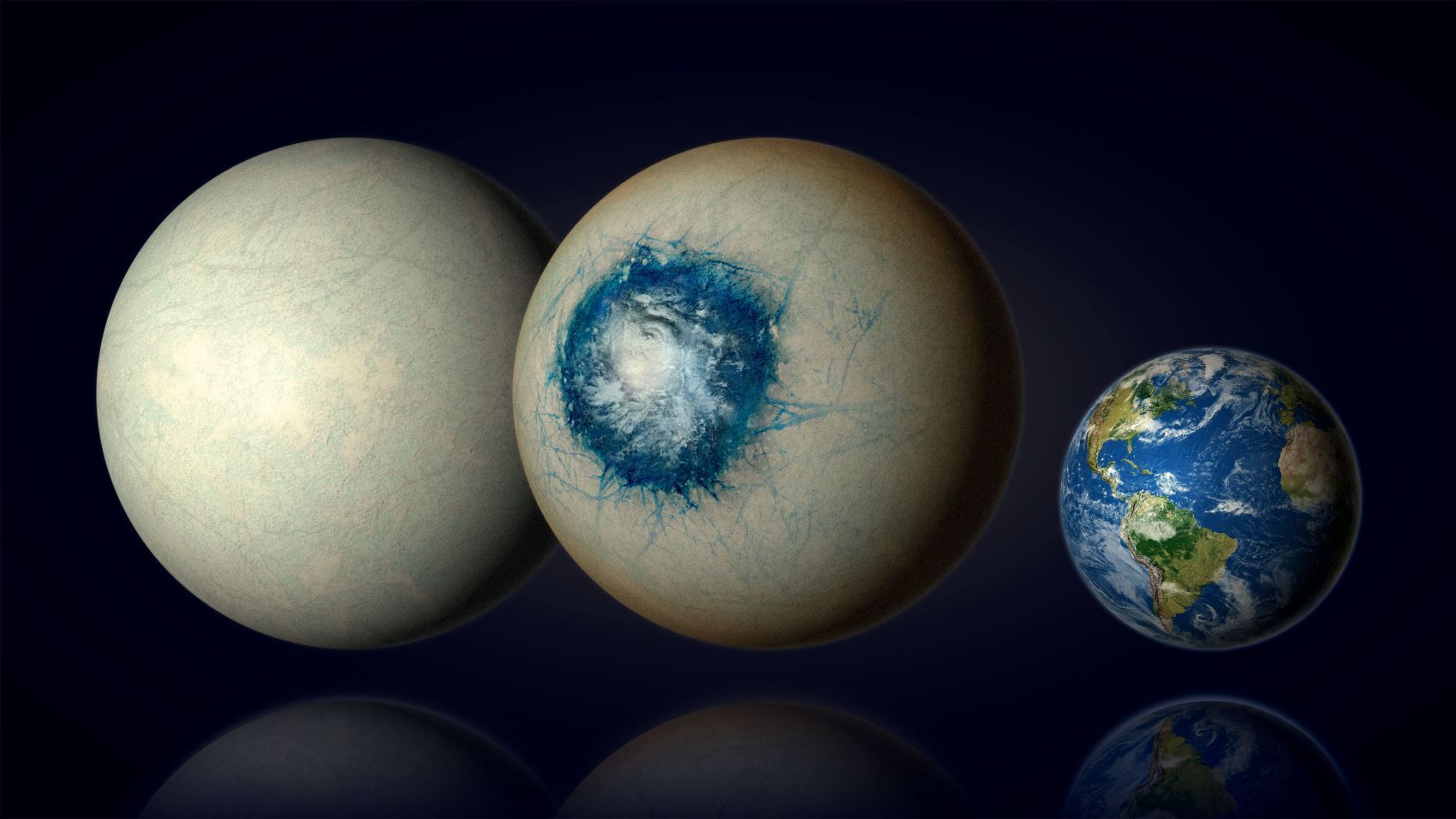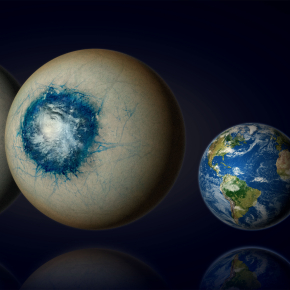
James Webb Space Telescope provides first hints of evidence of the existence of an ocean exoplanet
A team of CNRS planetary scientists1 working in collaboration with astronomers from the University of Montréal has presented first evidence that the temperate exoplanet LHS 1140b could be an ocean world.
Over the past few years, the planet, which is located around 48 light-years from the Solar System in the constellation Cetus, has been observed by the Hubble, Spitzer and TESS space telescopes, as well as by the ESPRESSO instrument mounted on the VLT telescope in Chile. The CNRS and University of Montréal teams had already worked together on these observations, which enabled them to accurately measure the mass and radius of LHS 1140b. These data showed that the planet has a low density, suggesting the presence of a thick envelope of hydrogen and helium and/or a significant amount of water on the planet.
In December 2023, observations of LHS 1140b by the James Webb Space Telescope (JWST) and its NIRISS instrument showed2 that today the planet no longer has an envelope of hydrogen and helium. This surprising finding was confirmed by an independent and simultaneous analysis carried out with another JWST instrument, NIRSpec, which operates at different wavelengths to NIRISS. This implies that the planet's low density is caused by the presence of water in far greater quantities than on Earth3 . Given the distance between the planet and its star, this water is likely to be at least partly in liquid form4 , forming oceans on and/or below its surface.
This conclusion, which constitutes the first promising finding by the JWST in the study of potentially habitable planets5 , is published on July 10 in the journal The Astrophysical Journal Letters.
Future observations should make it possible to characterise the chemical composition of the atmosphere of this 'super-Earth' type planet, which is 1.7 times larger than the Earth and 5.6 times more massive.

Transmission Spectroscopy of the Habitable Zone Exoplanet LHS 1140 b with JWST/NIRISS. Charles Cadieux, René Doyon, Ryan J. MacDonald, Martin Turbet, Etienne Artigau, Olivia Lim, Michael Radica, Thomas J. Fauchez, Salma Salhi, Lisa Dang, Loïc Albert, Louis-Philippe Coulombe, Nicolas B. Cowan, David Lafreniere, Alexandrine L’Heureux, Caroline Piaulet-Ghorayeb, Björn Benneke, Ryan Cloutier, Benjamin Charnay, Neil J. Cook, Marylou Fournier-Tondreau, Mykhaylo Plotnykov and Diana Valencia. The Astrophysical Journal Letters, July 10, 2024.
DOI: 10.3847/2041-8213/ad5afa
Contact
Notes
- The French laboratories taking part in this study are: Laboratoire de Météorologie Dynamique (CNRS/École Polytechnique/ENS – PSL/Sorbonne Université), Laboratoire d'Astrophysique de Bordeaux (CNRS/Université de Bordeaux), and Laboratoire d'Études Spatiales et d'Instrumentation en Astrophysique (Observatoire de Paris – PSL/CNRS/Sorbonne Université/Université Paris Cité).
- To characterise the atmosphere of exoplanets, scientists use a method called transmission spectroscopy.
- If the rocky composition of LHS 1140b is similar to that of planets in the Solar System, water would make up to about 10-20% of its mass (whereas the water in Earth's oceans makes up around 0.02% of our planet's mass).
- If LHS 1140b has an atmosphere like Earth’s, numerical climate simulations show that this extraterrestrial ocean could have temperatures up to around 30 °C.
- For around two years now, the JWST has been targeting the TRAPPIST-1 planetary system, made up of seven rocky planets of similar size, mass and temperature to the Earth. Scientists have since shown that some of these planets have lost their atmosphere, making the existence of oceans, and therefore life, on those worlds impossible. This is most probably not the case for planet LHS 1140b, which, with a mass that is five times greater and gravity that is twice as high, is far more likely to have kept its atmosphere. From this perspective, this makes it an even more interesting target to study in the search for habitable worlds than the planets in the TRAPPIST-1 system.


